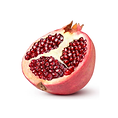
THE DYES
Colors from nature
IndiDye® Natural Color is our series of natural dyes made from biomass, fit for a wide range of fibres and applications. We have carefully selected 6 different raw materials for our dyes based on dyeing performance and sustainable availability. Sourcing by-products and renewable low impact raw materials which do not displace food production is key to our holostic mission to create textile products that do less harm to people and planet.


ACORN SHELL
CHESTNUT SHELL
MADDER ROOT
POMEGRANATE
SOPHORA JAPONICA
FLOWER BUDS
RIND
STICKLAC
GREYS
YELLOWS
REDS
YELLOWS
BROWNS
PURPLES
We extract concentrated natural compounds from our 6 raw materials to create our principal colors. IndiDye® Natural Color are natural dyes and the final color of the dyed product will vary depending on dyeing process and fibre composition, while different shades are achieved by altering dye concentration and settings.
IndiDye® Natural Color is available in yarns and fabrics for a range of products; wool, colored denim, wovens, mélange and silk.
Careful sourcing




Acorn shells, chestnut shells, and pomegranate rinds are sourced as by-products from the food processing industry, converting materials that would otherwise be discarded into valuable resources. This approach supports a healthy circular economy by reducing waste while ensuring a reliable supply of raw materials.


Sophora Japonica
(Pagoda Tree) is renowned for its durability and adaptability, tolerating heat, drought, pollution, and nutrient-poor soils. Widely cultivated in China and recognized as a heritage tree, it provides a plentiful supply of flower buds for natural dye extraction.


Madder root is harvested from a resilient plant that thrives in marginal soils not suitable for food production. Its cultivation requires no pesticides and actively enriches the soil, serving as an ideal complementary crop in diverse agricultural systems and fostering greater biodiversity through crop rotation.


Sticklac is a raw, natural resin secreted by the lac insect, collected as a crust from tree branches. The cultivation of sticklac offers sustainable economic opportunities to rural communities, as it enables harvesting without harming the host trees, thereby preserving biodiversity and supplying a valuable natural resin.

The low impact natural alternative
Indigo is among the oldest dyes known to man, dating back 6000 years. To many of us the characteristic color of indigo is what defines denim fabrics and blue jeans. Originally this beautiful blue color was derived from different plants containing indigotin. It was a highly valuable trade commodity known as "blue gold".
When the chemical structure of indigo was discovered in the late 1800s it enabled the development of synthetic production methods. Due to the very large amount of indigo used today, especially for the production of jeans, it is now mostly produced synthetically, often with severe environmental impact. IndiDye® is reviving natural indigo through innovation and technology for a low impact natural alternative.


Indigo made from farmland waste
The Guizhou Province is famous for its karst mountain scenery. But this mountainous province is also home to a significant part of the farming of Ban-Lan-Gen. IndiDye® Natural Indigo is sourced from Isatis Indigotica or "dyers woad", one of the most important traditional Chinese medicinal plants. Isatis Indigotica is farmed for the roots, Ban-Lan-Gen (Radix Isatidis), which has been used in China and other Asian countries for its antiviral and anti-inflammatory effects for thousands of years.

The leaves that remain after the harvesting of Ban-Lan-Gen are usually waste, but we provide the farmers additional income from their crops by utilizing the waste leaves. We collect them, soak them in water and ferment them to convert substances present in the leaves to blue indigo dyes for our low impact aniline free IndiDye® Natural Indigo. Wastewater and leftovers from the fermentation process is recycled back into the farmland for irrigation and fertilisation.
.png)
.png)



Natural bleaching
At IndiDye® we strive to optimize every step of the dyeing process. This is why we also offer the option of clay bleaching. Clay bleaching is a process where we use natural mineral rich clay to bleach fibres or yarns. The process uses significantly less water than traditional bleaching, we recycle 90% of the water in the process, and there are no hazardous chemicals.
The IndiDye® Clay White bleaching process reaches a Hunter whiteness level of 95-96. We can bleach raw fibres before dyeing and the raw undyed fibres that go into the blend when spinning the mélange yarns. We also offer the option to bleach yarns for white end products.




